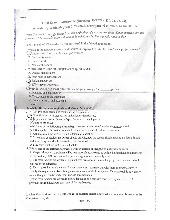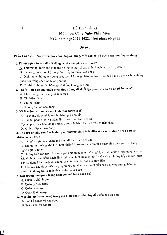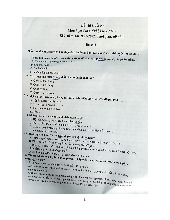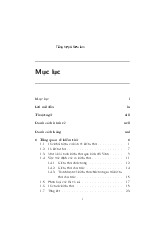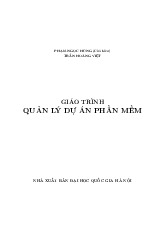



















Preview text:
Use Case Diagram
Software Design Methodology Using Use Case Diagrams
Use case diagrams are used to visualize,
specify, construct, and document the (intended)
behavior of the system, during requirements capture and analysis.
Provide a way for developers, domain experts and end-users to Communicate. Serve as basis for testing.
Use case diagrams contain use cases, actors, and their relationships.
@by Pham Ngoc Hung, Coltech, VNU, 2010 2 Use Case name
Use cases specify desired behavior.
A use case is a description of a set of
sequences of actions, including variants, a
system performs to yield an observable result of value to an actor.
Each sequence represent an interaction of actors with the system.
@by Pham Ngoc Hung, Coltech, VNU, 2010 3
Specifying the Behavior of a Use Case
Describing the flow of events within the use case.
Can be done in natural language, formal language or pseudo-code.
Includes: how and when the use case starts and
ends; when the use case interacts with actors
and what objects are exchanged; the basic flow
and alternative flows of the behavior.
@by Pham Ngoc Hung, Coltech, VNU, 2010 4 Actors name
An actor represents a set of roles that
users of use case play when interacting with these use cases.
Actors can be human or automated systems.
Actors are entities which require help from
the system to perform their task or are
needed to execute the system’s functions.
Actors are not part of the system.
@by Pham Ngoc Hung, Coltech, VNU, 2010 5 Use Cases and Actors
From the perspective of a given actor, a
use case does something that is of value
to the actor, such as calculate a result or change the state of an object.
The Actors define the environments in which the system lives
@by Pham Ngoc Hung, Coltech, VNU, 2010 6 Example of Use Case Diagram registration updating grades student faculty output generating
@by Pham Ngoc Hung, Coltech, VNU, 2010 7
Relationships between Use Cases
1. Generalization - use cases that are
specialized versions of other use cases.
2. Include - use cases that are included as
parts of other use cases. Enable to factor common behavior.
3. Extend - use cases that extend the
behavior of other core use cases. Enable to factor variants.
@by Pham Ngoc Hung, Coltech, VNU, 2010 8 1. Generalization
The child use case inherits the behavior and meaning of the parent parent use case. The child may add to or child
override the behavior of its parent.
@by Pham Ngoc Hung, Coltech, VNU, 2010 9 More about Generalization registration non-graduate graduate registration registration
@by Pham Ngoc Hung, Coltech, VNU, 2010 10 2. Include base <> included
The base use case explicitly incorporates
the behavior of another use case at a
location specified in the base.
The included use case never stands
alone. It only occurs as a part of some larger base that includes it.
@by Pham Ngoc Hung, Coltech, VNU, 2010 11 More about Include
Enables to avoid describing the same flow
of events several times by putting the
common behavior in a use case of its own. updating grades <> verifying student id output <> generating
@by Pham Ngoc Hung, Coltech, VNU, 2010 12 3. Extend <> base extending
The base use case implicitly incorporates
the behavior of another use case at certain
points called extension points.
The base use case may stand alone, but
under certain conditions its behavior may
be extended by the behavior of another use case.
@by Pham Ngoc Hung, Coltech, VNU, 2010 13 More about Extend
Enables to model optional behavior or branching under conditions. <> Exam copy Exam-grade request appeal
@by Pham Ngoc Hung, Coltech, VNU, 2010 14 Relationships between Actors Generalization. student graduate non-graduate student student
@by Pham Ngoc Hung, Coltech, VNU, 2010 15
Relationships between Use Cases and Actors
Actors may be connected to use cases by
associations, indicating that the actor and
the use case communicate with one another using messages. updating grades faculty
@by Pham Ngoc Hung, Coltech, VNU, 2010 16 Example place place <> conference phone call call cellular network receive receive <> additional phone call call use user scheduler Cellular Telephone
@by Pham Ngoc Hung, Coltech, VNU, 2010 17 A More Complicate Example U p da t e I te m s B o o k s h o p W o rk e r S h ip O rd e r
U p d a t e S t a ff D e t a ils C u s t o m e r B o o k s h o p 1 M a n a g e r R e g is t e r D e t a ils < < in c lu d e> > S y s t e m L o g in
< < e x t e n d > > H a n d le O rd e r
< < in c lu d e > > < < in c lu d e> >
U p d a t e C u s t o m e r D e t a ils M a k e O rd e r
A d d It e m s t o S h o p p in g C a rt
@by Pham Ngoc Hung, Coltech, VNU, 2010 18 os e Use Case Description - sp
Each use case may include all or part of the following: eci fie Title or Reference Name - meaningful name of the UC s Author/Date - the author and creation date the Modification/Date
- last modification and its date go Purpose
- specifies the goal to be achieved al Overview
- short description of the processes to Cross References - requirements references be Actors - agents participating ac hie Pre Conditions
- must be true to allow execution ve Post Conditions
- will be set when completes normally d Normal flow of events - regular flow of activities by Alternative flow of events - other flow of activities the
Exceptional flow of events - unusual situations UC Implementation issues
- foreseen implementation problems Ov erv ie
@by Pham Ngoc Hung, Coltech, VNU, 2010 w 19 Example- Money Withdraw Use Case: Withdraw Money Author: ZB Date: 1-OCT-2004
Purpose: To withdraw some cash from user’s bank account
Overview: The use case starts when the customer inserts his credit
card into the system. The system requests the user PIN. The system
validates the PIN. If the validation succeeded, the customer can
choose the withdraw operation else alternative 1 – validation failure
is executed. The customer enters the amount of cash to withdraw.
The system checks the amount of cash in the user account, its credit
limit. If the withdraw amount in the range between the current
amount + credit limit the system dispense the cash and prints a
withdraw receipt, else alternative 2 – amount exceeded is executed.
Cross References: R1.1, R1.2, R7
@by Pham Ngoc Hung, Coltech, VNU, 2010 20
